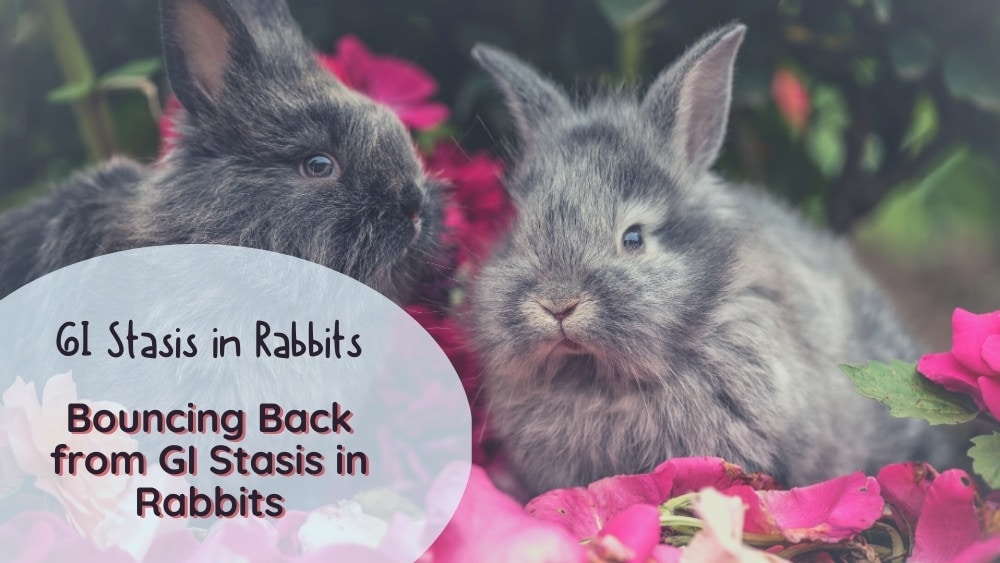It’s fair to say that for most of us, the inner workings of our digestive tract aren’t something we pay too much attention to. After all, if we skip a meal here and there, or our bowel movements are a little irregular, the worst we’d expect is a mild stomach ache. And the same is true for our cats and dogs – despite their loud protests to the contrary, fasting for a day probably won’t kill them.
Not so for rabbits. Gastrointestinal stasis, or GI stasis, is a potentially life-threatening condition for bunnies, where they can’t or won’t eat, and can’t or won’t poop. The normal movement of the gastrointestinal tract slows down or stops and, if left untreated, GI stasis can lead to severe pain, organ damage, and even death.
As a rabbit owner, it’s important to be aware of the signs and symptoms of GI stasis, what to do if you see them, and how to prevent it. In this article, I’ll cover the information I wish all my rabbit clients knew about GI stasis, including:
- The causes and risk factors of GI stasis in rabbits
- The signs and symptoms to look out for
- How to prevent and treat GI stasis in your rabbit
- Tips for maintaining your rabbit’s gastrointestinal health
So sit down, grab a cup of coffee, and let’s dive into the world of GI stasis in rabbits.
What Is Gastrointestinal Stasis in Rabbits?
Gastrointestinal (GI) stasis is a serious condition where the rabbits’ digestive system slows down or stops. It can be caused by a variety of factors, including stress, lack of exercise, a change in diet, dental issues, or the ingestion of foreign objects. Symptoms may include loss of appetite, lethargy, bloating, and reduced or absent fecal production.
GI stasis, also known as ileus or hypomotility, can occur in any animal, but is more commonly seen in rabbits. It can also be a symptom of other underlying health conditions such as bladder stones, uterine cancer, or gastrointestinal infections.
If you suspect your rabbit has GI stasis, seek veterinary care as soon as possible. It can be a silent killer if left untreated.
To prevent GI stasis, it is important to provide a diet high in fiber and low in sugar and fat, encourage exercise, and avoid making sudden changes to the rabbit’s diet or environment.
How a healthy rabbit GI tract functions
The GI tract of a rabbit is where digestion takes place, and is responsible for breaking down and absorbing nutrients from ingested food.
In rabbits, the GI tract consists of the mouth, esophagus, stomach, small intestine, cecum, and large intestine.
A healthy GI tract functions smoothly, with the normal movement of the digestive system (called peristalsis) helping to move the food efficiently.
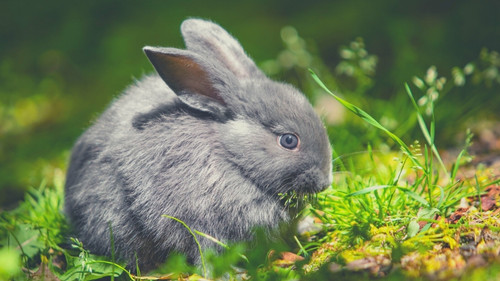
However, when a rabbit suffers from GI stasis, the normal movement of the digestive system slows down or stops, leading to a build-up of undigested food in the GI tract. This can be very painful and stressful for the rabbit, and can lead to malnutrition and dehydration if the rabbit stops eating and drinking.
How Do Pet Rabbits Get GI Stasis?
There are several factors that can contribute to the development of GI stasis in pet rabbits.
Diet
A diet that is low in fiber and high in sugar and fat can lead to GI stasis.
It is important to provide rabbits with a healthy diet that is high in fiber, such as hay.
Fiber is important for maintaining the digestive system in healthy rabbits because it helps to bulk up the stool and keep the intestines moving efficiently. When a diet is low in fiber, there is less bulk in the stool, which can make it harder for the intestines to move waste through the system. This can lead to constipation and other digestive issues.
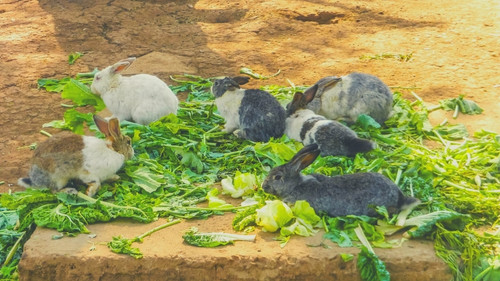
Sugar and fat can also contribute to GI stasis in rabbits because they can slow down the movement of food through the digestive system. High levels of sugar and fat in the diet can lead to an increase in inflammation, which can contribute to abdominal discomfort and other digestive issues.
Stress
Changes in the rabbit’s environment or routines, such as a new home or the introduction of a new animal, can cause stress and lead to GI stasis.
Lack of exercise
Like any animal, rabbits need regular exercise to keep their bodies and minds healthy. Physical activity helps to stimulate intestinal activity, but a lack of exercise can contribute to the development of GI stasis.
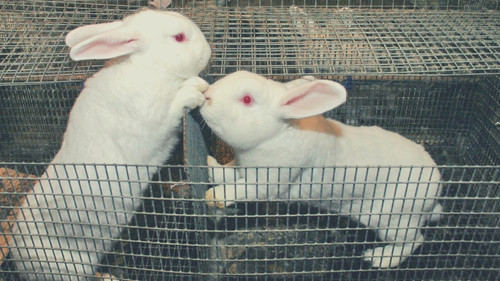
Dental issues
Rabbits’ teeth grow continuously throughout their lives, and if they are not properly aligned or are overgrown, they can interfere with the rabbit’s ability to eat and digest food properly.
Dental pain in a bunny’s mouth often makes them stop eating, and is a leading cause of secondary GI stasis.
Ingestion of foreign objects
If a rabbit eats a non-food item, it can get stuck in the intestinal tract and cause GI stasis. This is more common in rabbits that have access to a lot of objects, such as those kept in a cluttered environment.
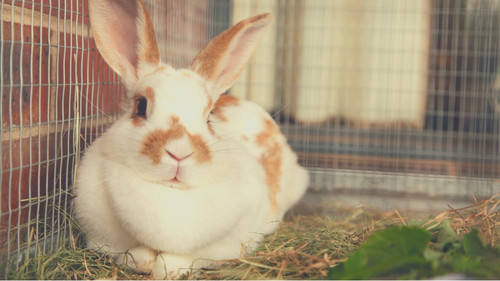
How Do You Know if Your Pet Rabbit Has Gastrointestinal Stasis?
It is important for rabbit owners to be aware of the signs and symptoms of GI stasis, so they can seek veterinary care in the early stages if they suspect their rabbit may be affected.
Decreased appetite
The most common sign of GI stasis in rabbits is a decreased appetite. If your rabbit stops eating or eats significantly less than normal, this could be a sign of GI stasis.
It is important to pay attention to your rabbit’s eating habits and to be aware of any changes, as a sudden reduction in appetite could be a sign of a serious problem.
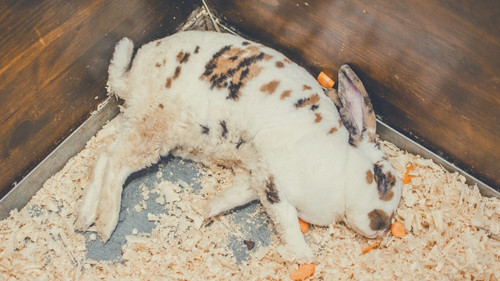
A loss of appetite can also be accompanied by changes to its body weight, as the rabbit is not getting the necessary essential nutrients from its food.
Lethargy
Lethargy is also common in affected rabbits. If your rabbit becomes less active or is sleeping more than usual, this could be a sign that it is experiencing discomfort or severe pain due to GI stasis.
A normally energetic and active rabbit may become less interested in playing or interacting with its surroundings if it is experiencing GI stasis.
Bloating
If your bunny’s tummy becomes swollen or appears distended, this could be a sign that gas or fluid is building up in its digestive system.
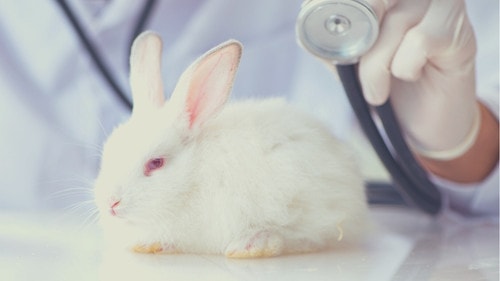
This can be a sign of intestinal obstruction or another issue that is preventing the normal movement of food through the digestive tract.
Reduced or absent feces production
If your rabbit is producing significantly fewer fecal pellets than normal or has not produced any feces in 24 hours, this could be a sign that your rabbit’s digestive tract is not functioning properly.
It is important to monitor your rabbit’s feces production regularly and to be aware of any changes.
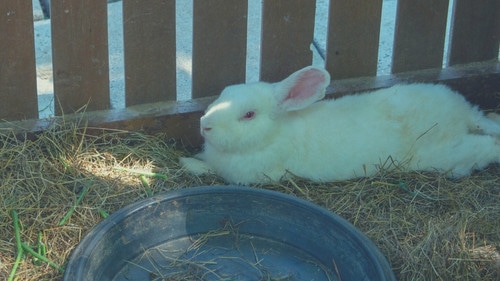
Normal fecal pellets should be small, dry, and round, about the size of a small pill, and they should be dark brown with a uniform shape. If your bunny’s feces appear smaller, or it’s producing extremely dry fecal pellets, it may be an indication that their GI tract is slowing down, and you’ve got a sick rabbit.
Other Complications that Might Be Caused by GI Stasis
GI stasis isn’t just about the organs in rabbits’ GI tracts – it’s often associated with problems in other parts of the body, either as a cause or an effect. Here are the most common ones.
Liver disease
Fatty liver disease, also known as hepatic lipidosis or fatty liver syndrome, is a common condition in rabbits that is characterized by the accumulation of excess fat in the liver.
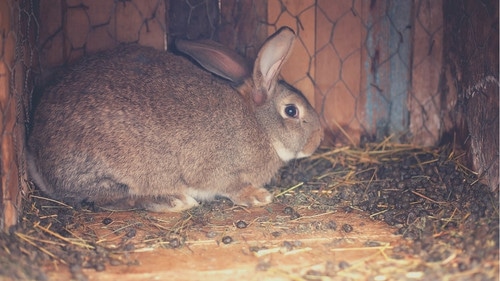
In rabbits, the liver plays a vital role in the digestion and metabolism of nutrients. When the digestive system is not functioning properly, such as in GI stasis, the liver doesn’t receive enough nutrients and begins to break down fat stores to meet its energy needs.
This can lead to the accumulation of excess fat in the liver, resulting in fatty liver disease.
Dehydration
GI stasis can cause dehydration, as the intestines can’t absorb any more water from their dried contents. As a result, rabbits produce less urine. This can increase the risk of kidney problems, as there isn’t enough fluid throughput to support the kidneys’ normal function.
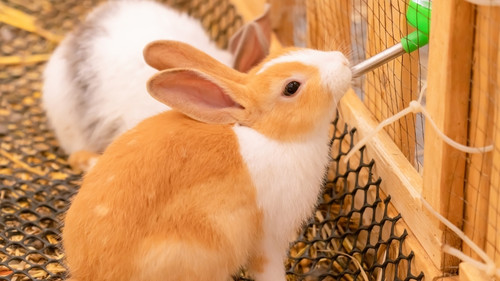
Kidney disease
The kidneys play a vital role in maintaining the balance of electrolytes and fluids in the body, and kidney disease disrupts this balance and can lead to GI stasis.
As dehydration from GI stasis damages the kidneys, and kidney disease slows the GI tract, this traps the bunny in a vicious cycle of illness.
Urinary tract infections
Dehydration can also increase the risk of urinary tract infections (UTIs) in rabbits, as less urine is produced and harmful bacteria can accumulate in the urinary tract.
In addition, UTIs can also contribute to the development of GI stasis, as painful rabbits stop eating.
How Long Does GI Stasis Last in Rabbits?
The length of time that GI stasis lasts in rabbits depends on a variety of factors, including the underlying cause and the severity of the symptoms.
In some cases, GI stasis may resolve on its own within a few days with supportive care and treatment, such as medications to stimulate the digestive system and relieve discomfort.
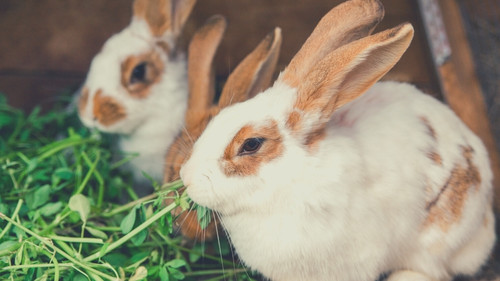
In more severe cases, GI stasis may last for several days and require critical care. X-rays or other diagnostic tests can help determine the cause of the condition, and surgery may be needed to remove any foreign objects or blockages in the digestive tract.
In the worst cases, a rabbit may get so severely dehydrated from GI stasis that it dies before the owners even realize what is happening.
Rabbit GI stasis survival rate
The survival rate for rabbits experiencing gastrointestinal (GI) stasis depends on a variety of factors, including the underlying cause of the condition, the severity of the symptoms, and the timeliness of treatment.
In general, the survival rate for rabbits with GI stasis is fair if the condition is diagnosed and treated promptly. With proper medical care and supportive treatment, many rabbits can recover from GI stasis.
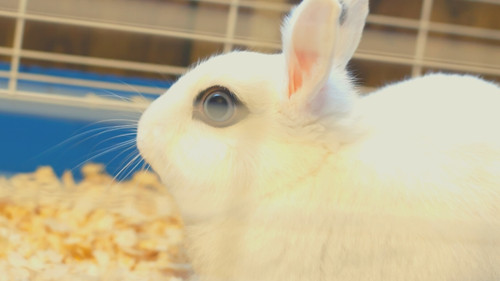
However, if the condition is left untreated or if the rabbit’s condition deteriorates significantly before they are taken to the vet, the survival rate is a lot lower.
It is important for rabbit owners to be aware of the signs and symptoms of GI stasis and to seek veterinary care as soon as possible if they suspect that their rabbit may be affected.
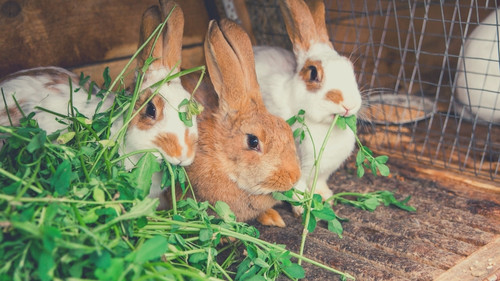
By taking these steps, you can help ensure that your rabbit has the best chance of a full recovery. It is also important to follow your veterinarian’s recommendations for treatment, to give your rabbit all necessary care to help them recover from GI stasis as quickly as possible.
Treatment of GI Stasis
If your pet rabbit has been diagnosed with gastrointestinal (GI) stasis, it is important to follow your veterinarian’s recommendations for treatment. Some treatment options include the following:
Syringe feeding
The most important part of treating GI stasis is getting the intestines moving again, and that means putting food inside them. Syringe feeding provides nutrition and hydration. Your vet can provide a suitable food source, or you can purchase a high-quality formula like Oxbow Critical Care online.
Note that when your rabbit is sick, you won’t have time to wait for an online delivery before you start to syringe feed. Order some in advance, just in case, or buy some from your vet to last until your delivery arrives.
Medications
Your veterinarian may prescribe medications to stimulate the digestive system, known as intestinal motility agents, and others that act as pain relief.
Your vet may also prescribe probiotics, which are microorganisms that are similar to the normal population of GI bacteria in the body.
The aim of these is to help improve the balance of beneficial bacteria in the gut and promote healthy gut motility.
Fluid therapy
Fluid therapy involves the administration of fluids, either intravenously (through a vein) or subcutaneously (under the skin), to help rehydrate the rabbit and support its condition.
As well as supporting the rabbit’s kidneys and circulation, fluid therapy helps to rehydrate the fecal matter in the intestines, so that the natural peristalsis can move things along again.
Surgery
In some cases, surgery may be necessary to remove any foreign objects or blockages in the digestive tract that are contributing to the development of GI stasis. This may involve removing an obstruction or repairing any damage to the digestive system.
How to treat GI stasis in rabbits at home
You should not attempt to treat GI stasis at home instead of going to your vet clinic. GI stasis is an emergency, and requires immediate treatment.
However, in addition to following your veterinarian’s recommendations, there are some things you can do at home to help provide supportive care to your rabbit as they recover:
- You may need to syringe feed your bunny, as this can be a helpful way to provide nutrition and hydration when your rabbit is unable to eat or drink on its own.
- Syringe small amounts of pineapple juice into your rabbit’s mouth. This can help to soften the stomach contents, and provides fluid and sugars to your bunny.
- Offer the rabbit their favorite high-fiber foods. This should include plenty of fresh hay, as well as fresh leafy greens and garden leaves. Dandelions are a common favorite to get rabbits eating again.
- Your rabbit should have constant access to plenty of fresh, clean water.
- It is important to monitor your rabbit’s condition closely to be aware of any changes. Contact your veterinarian if you notice any worsening of the symptoms or any new symptoms.
By seeking prompt medical attention and following these steps, you can help ensure that your rabbit companion has the best chance of a full recovery from GI stasis.
How to Prevent GI Stasis
While it is not always possible to completely prevent a rabbit from developing GI stasis or intestinal blockage, here are steps that rabbit owners can take to reduce the risk.
- Provide a hay-based diet that is high in fiber and low in sugar and fat. A balanced diet that is high in indigestible fiber, such as grass hay, and fresh herbs, is essential for maintaining the normal functioning of your rabbit’s stomach and small intestines.
- Ensure that your rabbit has access to plenty of fresh, clean water. Dehydration can contribute to the development of GI stasis in rabbits, as well as kidney and urinary disorders.
- Provide plenty of opportunities for exercise and play, as this helps maintain normal intestinal motility in rabbits.
- Avoid making sudden changes to your rabbit’s diet or environment. Dietary changes should be made very gradually over a few weeks.
- Monitor your rabbit’s condition and behavior, as changes may be an early indication of a health problem.
- If you notice any symptoms, or are just worried your rabbit isn’t their usual self, it is important to contact your veterinarian as soon as possible.
Conclusion
Gastrointestinal stasis is a serious condition in rabbits, and can be fatal within a few hours if untreated. If you suspect that your rabbit may be suffering from GI stasis, it is important to seek emergency veterinary care.
By providing your rabbit with the right diet and housing, and catching any symptoms early, you can give your rabbit the best chance of avoiding GI issues.
If you have found this guide useful, share it with other rabbit owners. If you have questions about your pet, please type them in the comment section below.


